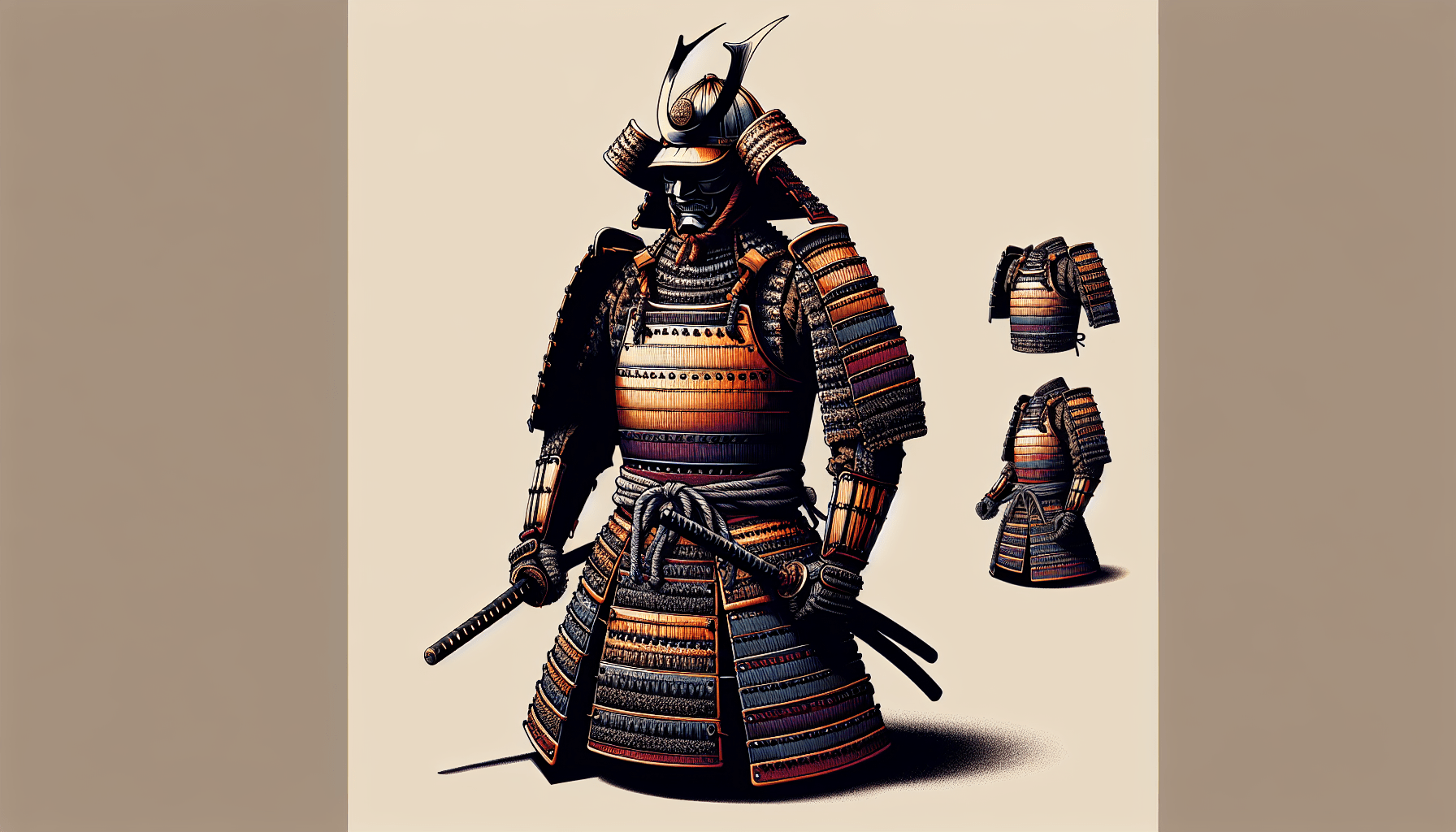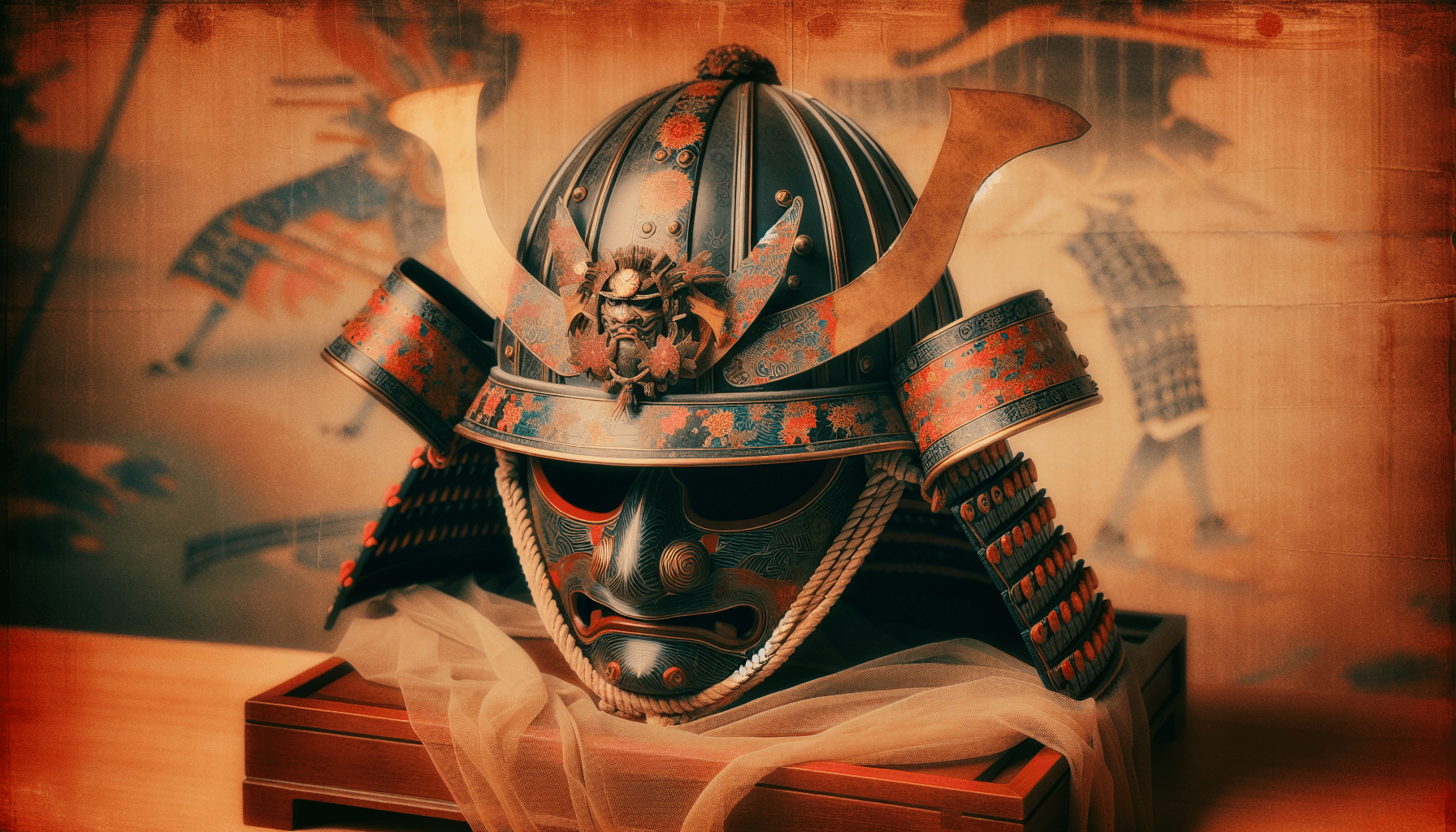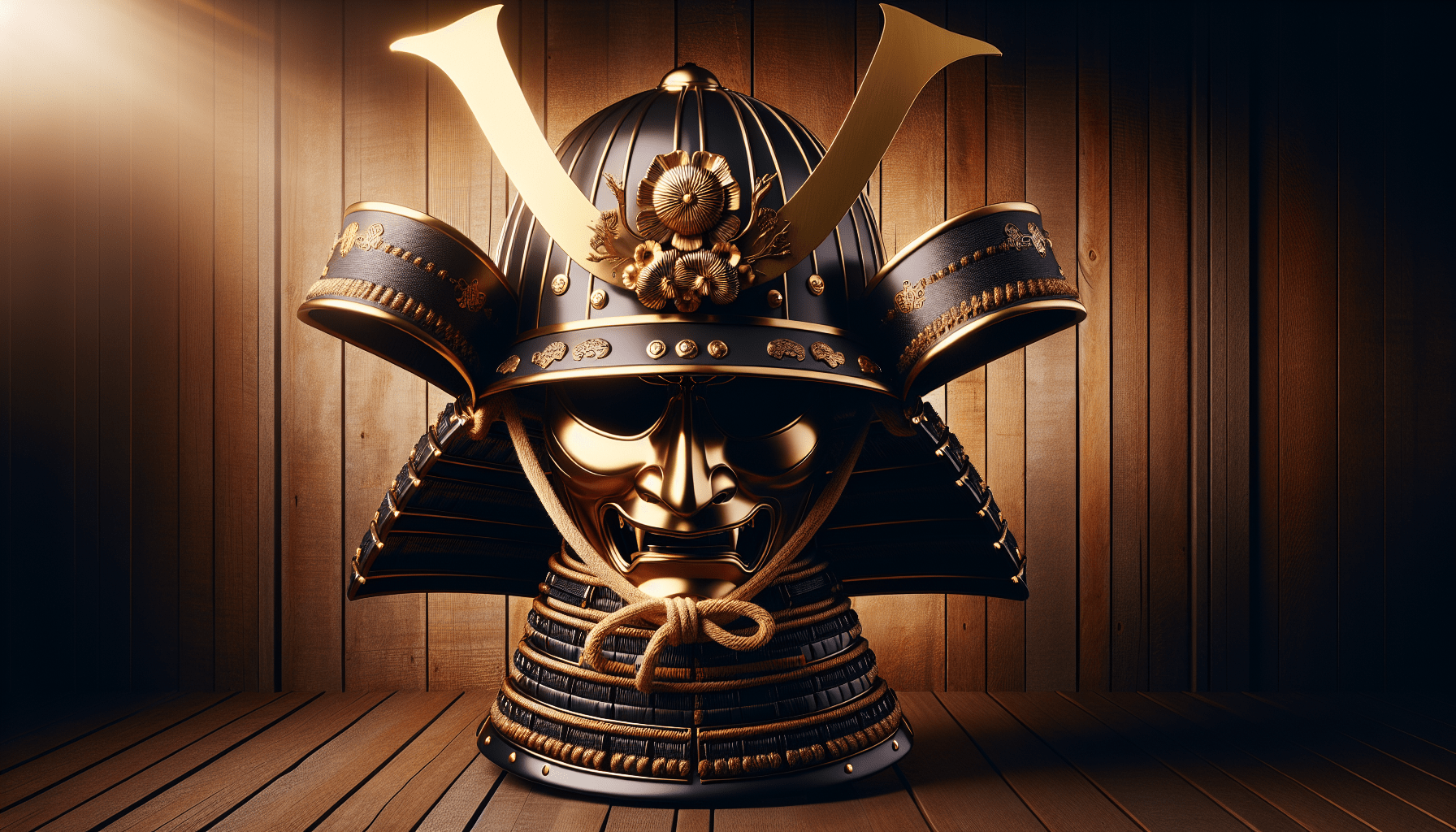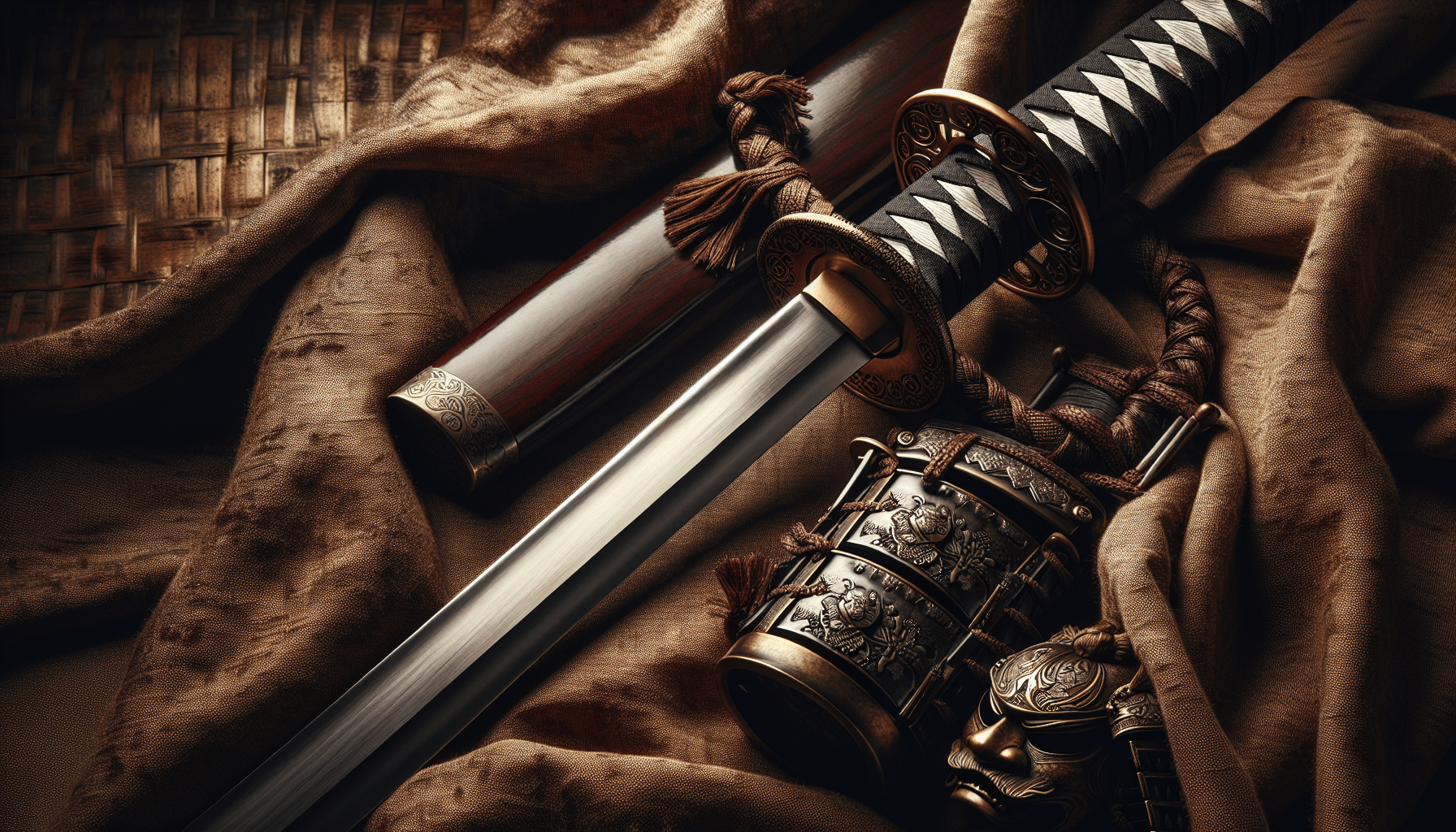
Get ready to explore an exciting review of the latest samurai armor set! This piece not only boasts a stunning design but also comes with a detailed comparison to the classic Takeda armor. You’ll discover insights about each set’s unique features, measurements, and fit, as well as personal experiences during testing.
By the end of this review, you’ll have a clear understanding of how the new armor stands up against the previous version. You’ll also find essential information should you feel inspired to make a purchase. Get ready for an in-depth look at these magnificent pieces that reflect rich history and craftsmanship!
Overview of Samurai Armor
Historical significance of samurai armor
Samurai armor, known as “yoroi,” is not just a means of protection; it is a cultural artifact that signifies the warrior class of Japan. From the Heian period (794-1185) through the Edo period (1603-1868), armor design evolved to reflect both the practical needs of battle and the aesthetic considerations of nobility. Samurai armor served as a symbol of status, with intricate designs and embellishments indicating a warrior’s lineage and achievements. This armor was crafted with meticulous care, incorporating unique techniques and materials, creating pieces that were both functional and artistically impressive.
Evolution of armor design through the ages
The design of samurai armor has evolved significantly over centuries, influenced by changes in warfare and technology. Early samurai armor was shaped from leather and simple metal, providing basic protection against arrows and blades. As warfare transformed, so did the armor, evolving into layers of metal plates, known as laminations, that offered superior protection. By the late Sengoku period (1467-1615), armor became increasingly ornate, featuring elaborate crest designs (mon) and decorative elements that celebrated the samurai’s individuality and heritage. Today, historical reenactments and collectors appreciate these changes as they reflect the artistry and craftsmanship of the time.
Purpose and functionality of samurai armor
At its core, samurai armor was designed for battlefield effectiveness. It needed to protect the warrior while allowing for mobility during combat. This dual purpose led to the development of distinct armor sections—such as helmets, breastplates, and protective gear for the arms and legs—that could withstand both blunt force and cutting attacks. The construction of armor involved careful consideration of weight distribution, allowing the wearer to move freely while still being shielded. Additionally, emotional and spiritual aspects guided the design of armor, with many pieces incorporating talismans or symbols believed to provide protection in battle.
Introduction to the New Samurai Armor
Type and specifications of the Hotoke nimai do
The new samurai armor set you’re considering is the Hotoke nimai do, featuring a smooth-faced breastplate known for its unique aesthetic. This particular armor is made of two main pieces: the front breastplate and a corresponding backplate. The specifications of the Hotoke nimai do are impressive, with a front bend measuring 40 cm, a back length of 48 cm, and an armpit-to-armpit width of 44 cm. The design not only embraces historical methods of construction but also showcases a modern approach to aesthetics.
Materials used in the new armor
When it comes to modern samurai armor, the choice of materials significantly impacts both functionality and appearance. The Hotoke nimai do typically utilizes high-quality steel, which is lightweight yet durable, combined with traditional lacquer for enhanced moisture resistance. This allows for robust protection against the elements while being aesthetically pleasing. Additionally, the use of silk and other luxury fabrics for the interior lining ensures comfort during wear, aligning historical authenticity with contemporary needs.
Visual aesthetics and design elements
Visually, the Hotoke nimai do differentiates itself through its smooth design, reminiscent of the rounded features of Buddha statues—a nod to the spiritual elements of samurai culture. The armor is often accented with rich colors such as deep blues, yellows, and touches of gold that create a striking visual impact. The minimalist approach of the smooth face ensures that the focus remains on the lines and craftsmanship of the armor itself, representing both elegance and strength.
Old Armor Review: Takeda Okegawa ni mai do
Physical characteristics and measurements
The Takeda Okegawa ni mai do is a traditional armor type that holds historical significance. This armor set features horizontal plating, which provides a slightly different protective style than its contemporary successors. The reviewer’s experience wearing this armor reflects a chest circumference of 102 cm and a height of 1.75 m, fitting reasonably well, though some tightness is noted. For individuals within the height range of 165 cm to 178 cm, this armor would generally suit them well, though taller users may experience slight discomfort.
Owner’s experience and comfort level
Your experience with the Takeda Okegawa ni mai do highlights a balance between historical authenticity and personal comfort. While the armor may feel slightly restrictive due to the fit, it still provides adequate movement for various activities. The main drawback of this older armor type is the tightness—as certain body sizes do not allow for full closure, leaving gaps that diminish protection. This significant observation motivates the transition to the Hotoke nimai do, which promises more adaptability.
Comparison of design and craftsmanship
When comparing the Takeda Okegawa ni mai do with the newer Hotoke nimai do, the differences in craftsmanship and design become apparent. The Takeda set features complex plating that showcases the traditional techniques of its time, emphasizing durability over minimalist aesthetics. In contrast, the Hotoke armor embraces a fused design with smooth surfaces, symbolizing a more modern interpretation of samurai heritage. The differences in craftsmanship reflect not only changing practical needs but also shifts in cultural priorities.
Detailed Comparison of Armor Types
Design elements: what sets them apart
The design of the Hotoke nimai do versus the Takeda Okegawa ni mai do shows stark contrasts in aesthetic and functionality. The former’s smooth, seamless plates signify a shift toward modern elegance, prioritizing design simplicity. On the other hand, the Takeda armor’s segmented construction emphasizes traditional craftsmanship. Each plate in the Takeda set serves a purpose, creating a distinctive layered look that celebrates its heritage.
Functional aspects: protection and mobility
Functionally, both types of armor provide superior protection, albeit in different manners. The Hotoke nimai do’s design allows for increased mobility, perfect for agile movements during combat or demonstrations. However, the segmented design of the Takeda armor offers enhanced protection against slashing attacks, which can be critical in more severe combat scenarios. Your experiences in trying both armors confirm that neither compromises significantly on protection; rather, they cater to different combat styles.
Weight and balance analysis
When analyzing weight and balance, the Hotoke nimai do tends to be lighter, reflecting advancements in material technology and design. As a result, it may feel more comfortable over extended periods of wear. In contrast, the Takeda Okegawa ni mai do, while heavier due to its multiple plates, provides a solid weight distribution that can enhance the feeling of security. Your preference between the two may come down to personal comfort, usage scenarios, and the desired protection level.
Comfort and Fit Comparison
Chest circumference compatibility
The chest fit of both armor types plays an essential role in comfort. The older Takeda armor, while suitable for some, has limitations due to the fixed size that may not accommodate diverse body types effectively. In contrast, the Hotoke nimai do’s adaptability is evident, accommodating chest circumferences up to 114 cm with an adjustment of 7 cm possible. This level of customization ensures that wearers can find a fit that feels comfortable and protective without significant size restrictions.
Mobility tests and real-life wearability
You’ve tested both armor types in terms of mobility, and the results are telling. The sleek design of the Hotoke nimai do allows you to move freely, whether running, jumping, or climbing. Meanwhile, the Takeda armor, while offering more substantial coverage, sometimes restricts unrestricted movement, especially when undertaking dynamic activities. Therefore, your day-to-day activities will influence which armor type feels more suitable.
Adjustability features in new armor
The Hotoke nimai do stands out regarding adjustability, allowing modifications for various body types and allowing for a snug fit without compromising protection. The inclusion of side closures enhances the practicality of this armor when adapting to different users. In contrast, the more rigid design of the Takeda armor lacks this adaptability, limiting its usability for individuals with sizes outside the standard measurements.
Key Features of the New Armor
Smooth-faced breastplate and its inspiration
The standout feature of the Hotoke nimai do is undoubtedly its smooth-faced breastplate, a design inspired by the serene forms of Buddha statues. This aesthetic choice not only provides a unique look but also carries spiritual significance, signaling a deeper connection to cultural heritage and the values of the samurai class.
Protective capabilities versus old armor
When compared to the Takeda set, the Hotoke nimai do demonstrates similar, if not enhanced, protective capabilities. Its modern materials and construction techniques allow for a higher degree of impact resistance, while its innovative design ensures full coverage where it matters most. Overall, the new armor offers a balance of fortification and finesse that caters to today’s samurai enthusiasts.
Accents and creative design nuances
The Hotoke nimai do’s visual appeal is further enhanced by its decorative accents, including vibrant color choices and intricate stitching patterns. These design nuances not only reflect individual taste but also provide a way for the wearer to express their personality. In contrast, while the Takeda armor has its own charm, its intricacy may be lost on some in favor of more understated aesthetics.
Armor Suitability for Different Body Types
Height and chest circumference factors
One of the critical considerations when selecting armor is compatibility with height and chest circumference. The Hotoke nimai do accommodates a wider range of body sizes with customizable components, making it a versatile option for various users. While the Takeda armor may appeal to traditionalists, it is less flexible, impacting those outside the designated height and size parameters.
Fit recommendations for potential users
For potential users looking to purchase, your specific body measurements are key. If your chest circumference is around 102 cm, you may find both armor types viable. However, if you’re larger or smaller, the Hotoke’s adjustability makes it a superior choice. The recommendation would be to opt for the modern armor set if you value comfort over an authentic traditional experience.
Consideration for comfort over prolonged wear
When it comes to prolonged wear, comfort cannot be overlooked. The Hotoke nimai do offers a more forgiving fit, thereby minimizing fatigue during long events or performances. In contrast, while the Takeda armor holds historical value, its tighter fit may lead to discomfort over time, particularly for longer periods of active use.
Purchase Details and Availability
Where to buy the new armor
For those interested in acquiring the Hotoke nimai do, it’s essential to look for reputable sources that specialize in samurai armor. Many specialized armory shops, both online and physical locations, offer new samurai armor, providing you with various options, sizes, and styles to choose from.
Pricing comparison: new versus old armor
In your comparison of pricing, the Hotoke nimai do is marketed at a significant discount due to its display set status, making it an appealing purchase at $999. The value lies in its brand new condition and modern technology, especially when compared to the earlier Takeda Okegawa ni mai do, which, while loved, has seen considerable use over time and may not hold the same resale value.
Link listings and measurement references
While specific listings are not included here, the general advice is to seek multiple measurements and customer reviews before making a purchase. Ensure you cross-reference all details with sellers to find the best fit and style that aligns with your aesthetic aspirations and practical needs.
Personal Insights and Preferences
The speaker’s impressions of design and functionality
Your impressions of the new Hotoke nimai do resonate with excitement from the seamless design and excellent build quality. The balance of historical significance and modern touches embodies what you appreciate most about samurai armor. Additionally, practical elements like the adjustable features enhance its overall functionality for modern enthusiasts.
Preference for specific aesthetic elements
Your preference for the visual aspect of the Hotoke armor is evident, particularly regarding its smooth surfaces and clean lines, which stand out against the more intricate Takeda armor. This visual simplicity allows the armor to stand as a piece of art while still being functional, enhancing your enjoyment during wear and performance.
Feedback from tests and tries
Through your wear tests and personal experiences, you’ve discovered that while both armor sets serve their purpose, the Hotoke nimai do’s fit and feel align better with your needs as a modern practitioner. The positive feedback from tests reveals the practicality of the new design, bolstering your confidence in the purchase decision.
Conclusion
Summary of findings on both armor sets
In summation, comparing the Takeda Okegawa ni mai do with the Hotoke nimai do highlights the evolution of samurai armor design. While the Takeda armor maintains its historical authenticity and notable aesthetic, the Hotoke offers superior comfort, functionality, and a modern take on traditional elegance.
Final thoughts on suitability and design
Ultimately, the choice between the two will depend on individual preferences, needs for comfort, and style. If you lean towards rich tradition, the Takeda armor exemplifies age-old practices. However, if modern functionality is paramount, the Hotoke nimai do is undeniably the better option.
Encouragement for viewer engagement and exploration
As you continue to explore the world of samurai armor, it is encouraged to engage in discussions, ask questions, and share experiences with fellow enthusiasts. Exploring the nuances of different armor types can enhance your appreciation and love for this historical art form. Happy exploring, noble ones!







